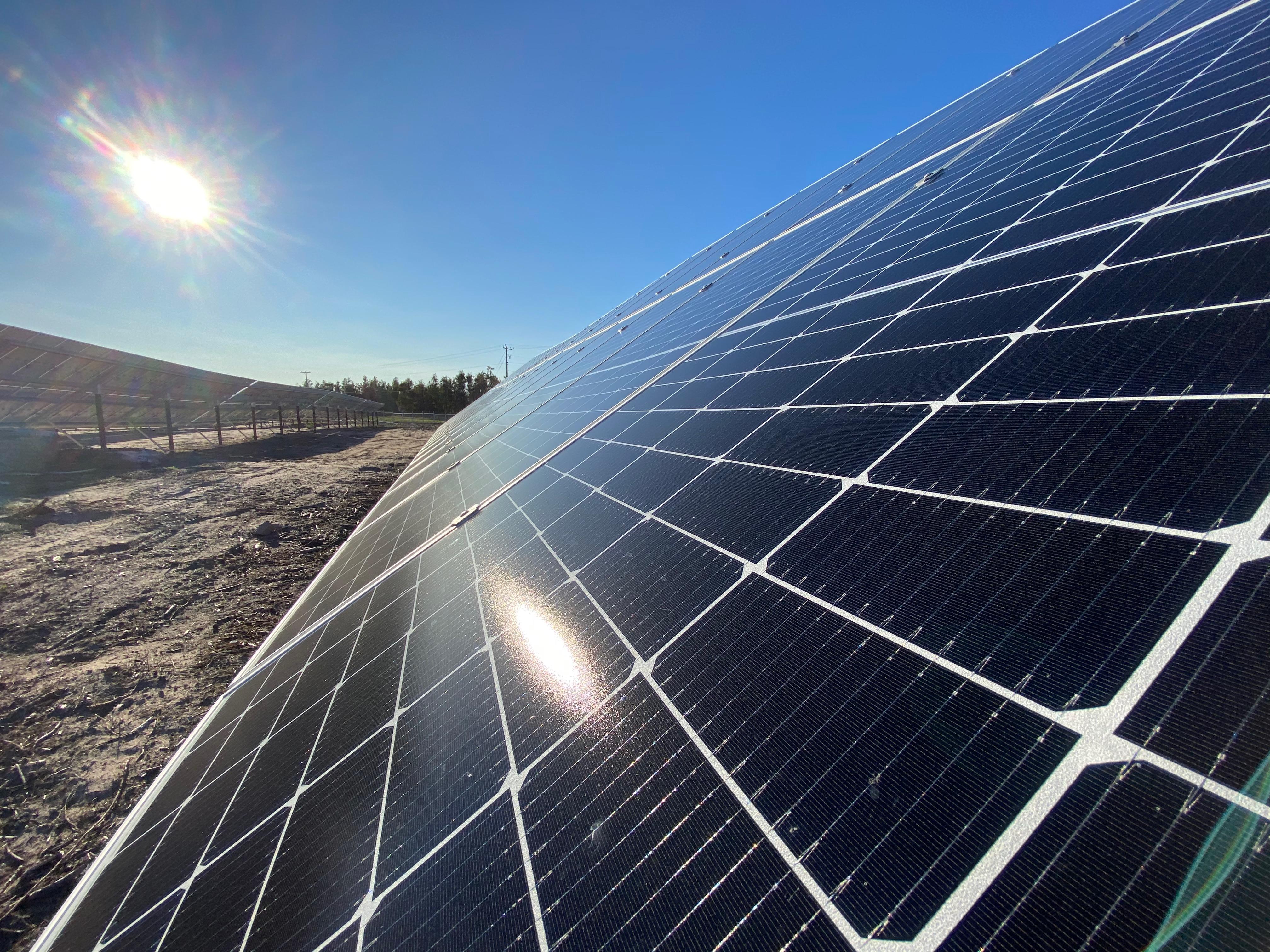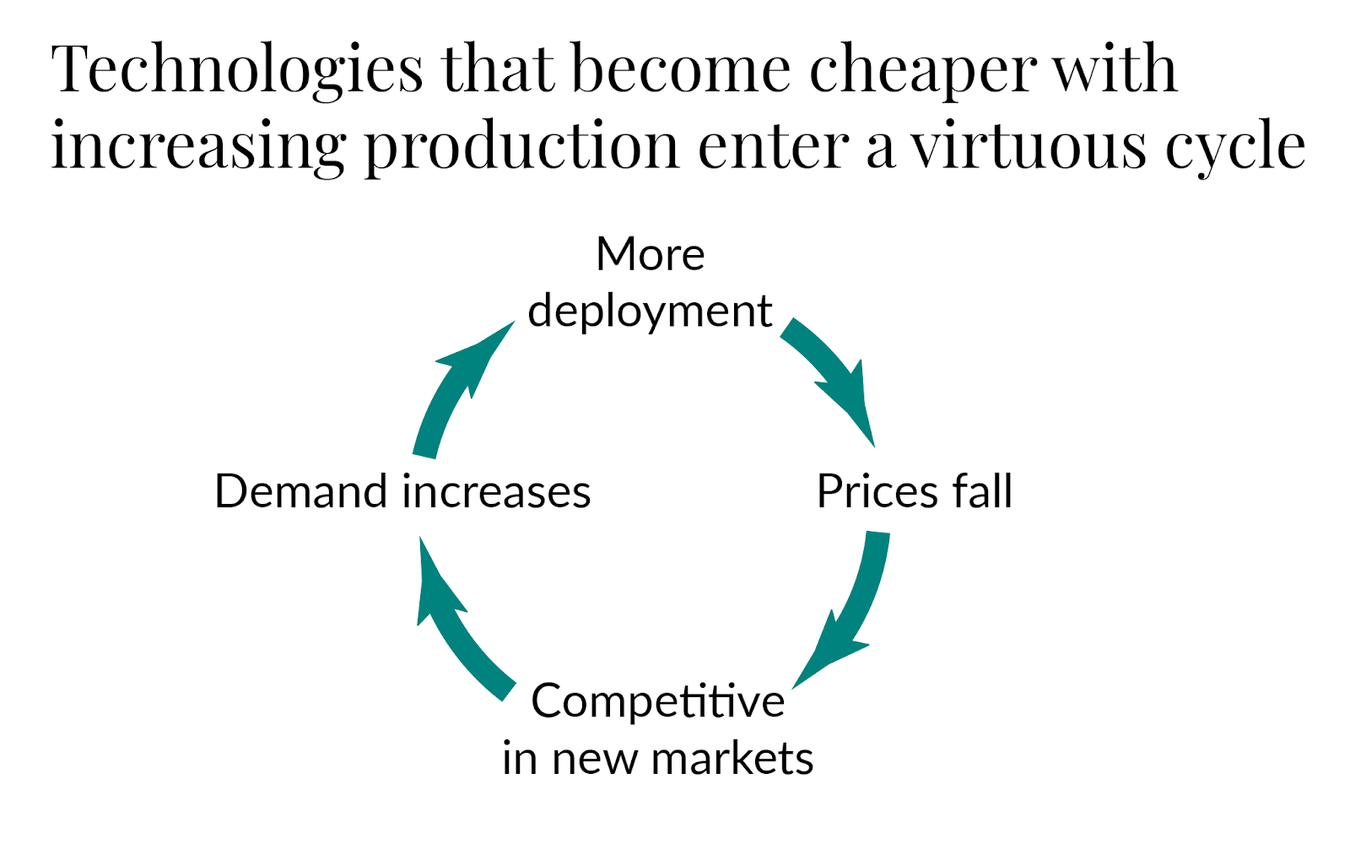Solar modules: now 99.9 per cent off! (from 1970s prices)

By Margret Nellissery, BRC-Canada Analyst
If clean energy held a cost-cutting Olympics, solar power would definitely be festooned with gold medals. As a key player in the global energy mix, solar power has become one of the cheapest forms of energy available today. The dramatic and sustained decline in the cost of electricity from utility-scale solar photovoltaics (PV) has been one of the most compelling developments in the power generation sector over the past few decades.
Between 2010 and 2023, the global average levelized cost of electricity (LCOE) for utility-scale solar projects dropped by 90 per cent. That’s the average cost of generating electricity from utility-scale projects calculated over their lifetime, including the cost to build and operate the project. This was the largest reduction among all renewable energy sources during this period.
Its affordability has also made it popular. By the end of 2023, global solar PV installations exceeded 1,411 gigawatts (GW), a remarkable 35-fold increase since 2010. Solar PV has consistently led annual capacity growth among all renewable energy technologies since 2016, and in 2023, it accounted for three-quarters of worldwide renewable capacity additions. This technology is projected to double by 2028, adding 672 GW compared to 2023.
There are a number of factors behind solar technology's rapid expansion and declining costs. It should be noted that the influence of favourable government policies in the form of mandates, subsidies, tax breaks and contracts for difference have played a large role. These policies helped reduce costs and led to effective adoption of the technology.
Technological advancements of the panels themselves are another important factor for allowing the rapid growth in solar capacity. In 2010, the average solar panel converted just 10 per cent of sunlight into electricity and by 2020, an average panel achieved 20 per cent; this meant the panels could generate significantly more electricity from the same amount of sunlight, which reduces the cost of each kilowatt-hour produced. Innovations such as multi-layer panels and bifacial designs, which capture sunlight from both sides, have improved efficiency further. This increase in solar module efficiency was made possible by significant investments in research and development, along with engineering improvements.
But perhaps the biggest story with solar is how good we are now at manufacturing solar modules, after making a billion of them over the past few decades. We can explain the plunge in solar prices using the concept of the "learning rate," which describes how the cost of a technology decreases with increased production and is often attributed to factors like learning-by-doing and economies of scale, which means the increased production of a specific technology tends to lead to reduced prices. The learning rate of solar PV modules is said to be 20.2 per cent, which means that with every doubling of installed cumulative capacity, the price of solar modules is reduced by 20.2 per cent. Over the past decade, this learning curve has been particularly steep, leading to rapid reductions in costs at all stages of the value chain, from manufacturing to installation and operation. Solar module prices have declined by 99.9 per cent since the 1970s from $106 to $0.10 per watt.
Learning-by-doing refers to the improved production and manufacturing process of solar modules. Larger and more efficient factories increased production rates and employed more refined manufacturing techniques. This included more efficient ingot (solid block of crystalline silicon used as a raw material for the production of solar cells) growth methods and diamond wafering, which helped reduce production waste and lower costs.
The scaling up of raw material mining and processing also helped drive costs down. Innovations in installation methods, coupled with more experience in operating and maintaining the panels, further contributed to reducing costs, while also improving the reliability and durability of solar technology.
It gets confusing when you think that you need to deploy and ramp up production to reduce prices, but to do that, you need the technology to be cost-effective. So how does it work? Our World in Data, a non-profit research organization that provides data on global development trends, mentions a concept called a "virtuous cycle." Echoing economies of scale, this concept delves into how technologies become cheaper with increasing production.
According to this cycle, to meet the current demand, the technology gets deployed more, which drives the prices down (due to economies of scale) and pushes the technology into competitive new markets, which then increases the demand for the technology, increasing its deployment even further, and the cycle continues. Driven by favourable government policies, solar technology entered the virtuous cycle and with the help of continued policies and technological advancements, the technology stayed within this positive feedback loop.

It was not all good for solar energy; after decades of continuous decline, prices unexpectedly surged between 2021 and 2023, increasing by 30 to 100 per cent. In Canada, the LCOE for utility-scale solar rose 36 per cent from 2022 to 2023. The COVID-19 pandemic caused major disruptions in solar technology's supply chains, which led to shortages of key components and a rise in shipping and other costs. There was an increase in the cost of raw materials, particularly polysilicon, whose prices rose from around US $28 per kilogram in 2021 to nearly US $37 per kilogram in 2022. Moreover, some regions also introduced trade policies such as tariffs on solar panels, which made solar products more expensive in some markets. But by 2023, the industry quickly ramped up manufacturing capacity, leading to a drastic decline in polysilicon prices, with the annual average for 2023 being US $15.5 per kilogram, a 58 per cent decrease compared to 2022.
The increased production capacity and technological improvements in solar module manufacturing helped stabilize prices, highlighting the crucial role favourable policies and technological advancements play in pushing technology forward.
With projections for further expansion and continued innovation, solar energy is set to play a dominant role in the future of global energy, proving that the power of innovation, scale and learning can drive profound changes in both cost and accessibility.
